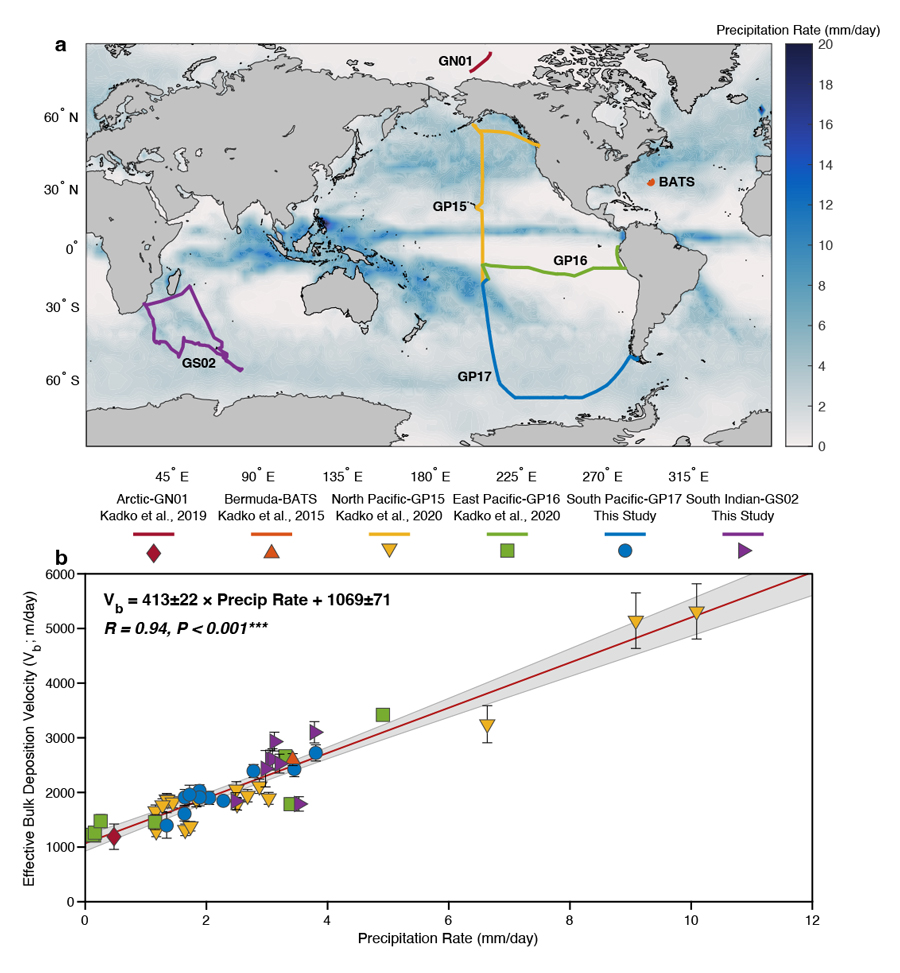Constraining aerosol deposition over the global ocean by the cosmogenic beryllium-7
He and co-workers (2025, see reference below) propose a global estimate of aerosol deposition onto the ocean using the cosmogenic radionuclide beryllium-7 (7Be). Despite their vital role in Earth’s climate system, aerosol deposition rates have been poorly constrained due to limited oceanic observations. The authors report new 7Be measurements from the GEOTRACES GP17-OCE and GS02 cruises, spanning the South Pacific, Southern Ocean and, Indian Oceans, and combined them with previously published 7Be data from other GEOTRACES expeditions. This integration of new and existing datasets enabled unprecedented spatial coverage across multiple ocean basins. Results reveal that global climate and chemical transport models systematically underestimate aerosol deposition by 39 ± 23%, leading to an overestimation of aerosol lifetimes in the marine atmosphere. This finding underscores the dominant role of precipitation-driven wet deposition and indicates that aerosols persist for shorter periods over oceans than previously thought. The new 7Be-based parameterization derived from this study provides a valuable observational benchmark for improving aerosol removal schemes in global models and for refining our understanding of aerosol-climate-ocean interactions. This work builds upon the pioneering legacy of the late Dr. David Kadko, whose foundational research in marine radioisotopes inspired and guided this study.

Reference:
He, Y., Kadko, D.C., Stephens, M.P., Sheridan, M.T., Buck, C.S., Marsay, C.M., Landing, W.M., Zheng, M., Liu, P. (2025) Constraining aerosol deposition over the global ocean. Nature Geoscience. Access the paper: 10.1038/s41561-025-01785-2
